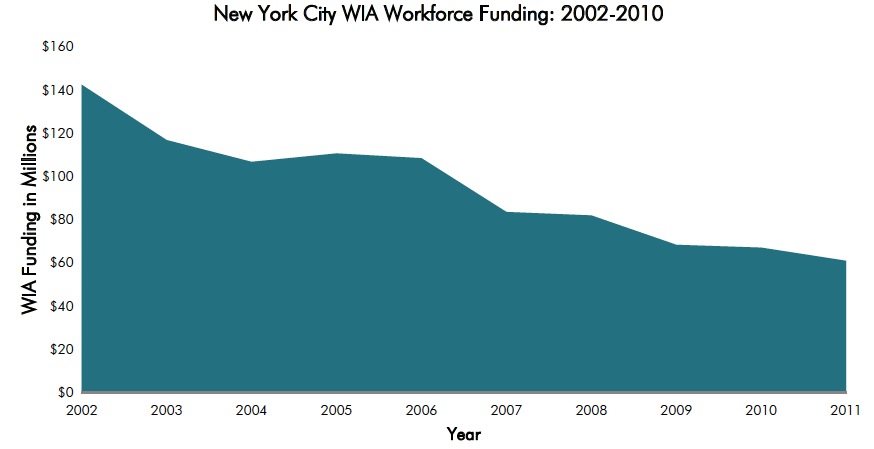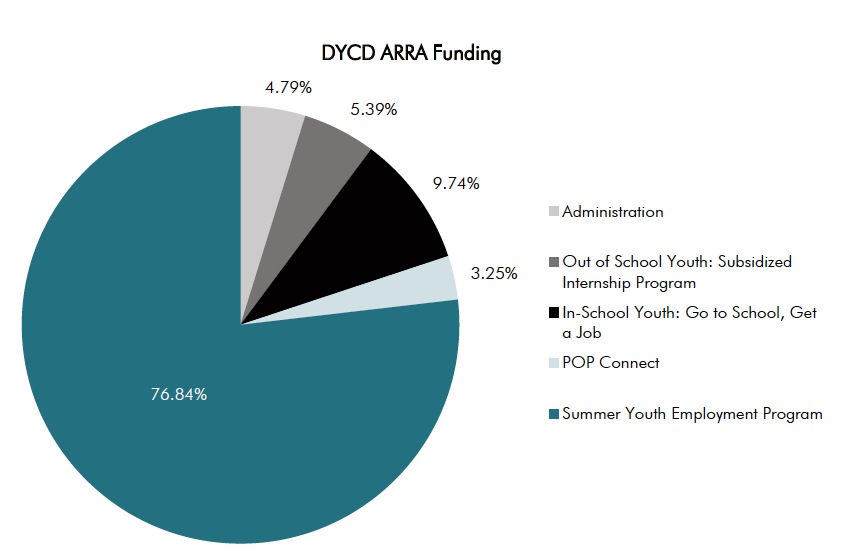THE CENTER FOR AN URBAN FUTURE
Introduction
In the winter of 2009, with more than 1.4 million job losses in the first two months of the year, the federal government passed the American Recovery and Reinvestment Act (ARRA) into law as a way to quickly inject liquidity into a stalling economy and maintain critical services that would allow individuals and communities to survive through the recession. At first glance, New York City made out pretty well. More than $7 billion in Recovery Act funds went to programs benefitting New York City residents, which was more than many entire states received. These funds went toward failing schools, community development block grants, building retrofits and a much needed temporary increase in the federal match for Medicaid, among many other things.
The most important way of assessing these investments has always been in terms of the jobs saved and people helped, but from the beginning it was also hoped that Recovery Act investments would provide a unique opportunity for policy innovation and reform. In no policy area was this truer than in workforce development. And in no other city would the payoff and potential pitfalls be clearer than in New York, the country’s largest workforce development system.
In all, the city received more than $86 million in ARRA funds for workforce development programs at the Department of Small Business Services (SBS) and the Department of Youth and Community Development (DYCD), the city’s primary agencies for workforce training; $63 million came from the Workforce Investment Act (WIA), the city’s dominant source of funding for workforce training programs, and $23 million from Community Service Block Grants. The new funds brought the city’s workforce budget up to levels it hadn’t seen for years.
However, all that money also came with strings attached: First, the funds had to get out the door and into the economy as fast as possible; the programs were supposed to be, as the Obama administration put it, “shovel ready.” Second, all ARRA funds had to be spent by June 2011, after which the city’s regularly scheduled funding streams would resume at pre-stimulus levels. In other words, in order to receive ARRA funds, workforce programs had to be either already up-and-running or far enough along in the development process to begin implementation almost immediately, and they had to be flexible enough to absorb a lot of additional funds over a short period and then shrink back down again.
Download full version (PDF): The End of an ARRA
About the Center for an Urban Future
www.nycfuture.org
“The Center for an Urban Future is a public policy organization dedicated to improving the overall health of New York City and serving its long-term interests by targeting problems facing low-income and working-class neighborhoods in all five boroughs.”
Tags: American Recovery and Reinvestment Act, ARRA, The Center for an Urban Future








 RSS Feed
RSS Feed